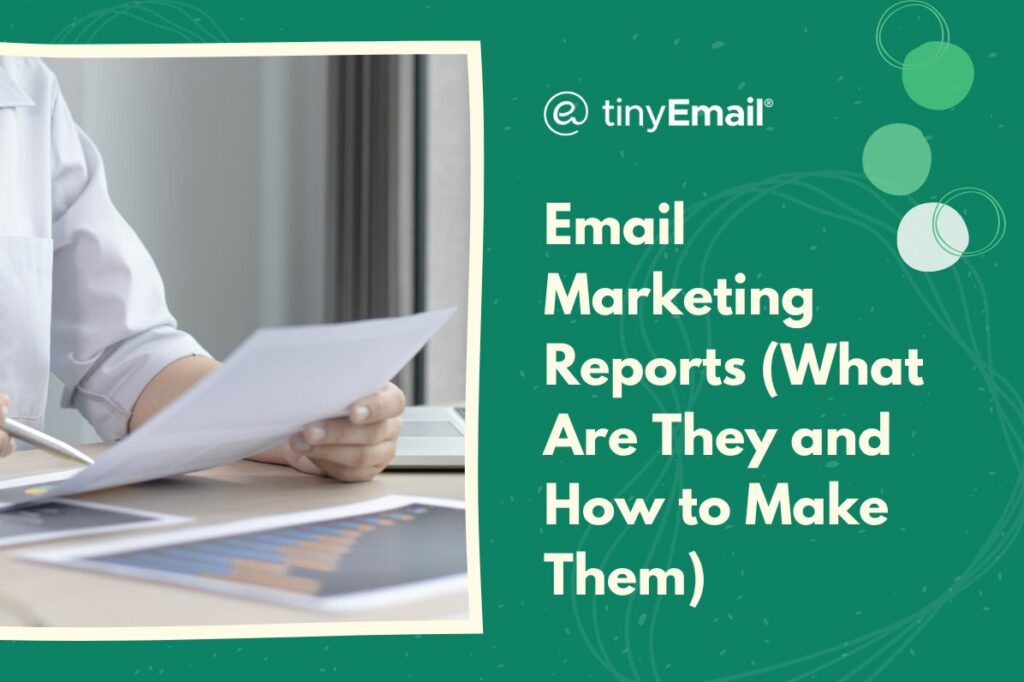An email marketing report is a document that provides an analysis of an email marketing campaign. It provides a comprehensive overview of the performance of an email marketing campaign, and it helps marketers to make data-driven decisions to improve their future campaigns.
Email marketing reports typically include information about key performance indicators (KPIs) that are relevant to the specific campaign. The report can also include details about the audience, such as their demographics, behavior, and preferences. This information then helps marketers better understand their audience and improve future campaigns.
An email marketing report may sometimes include recommendations for improving future campaigns, based on the insights gained from the analysis. These recommendations involve changes to the email design, subject lines, targeting, or timing of the campaigns.
Why Are Email Marketing Reports Important?
Email marketing reports are important for several reasons. They provide a way to measure the effectiveness of a campaign by tracking key metrics. This information is something email marketers can use to determine how successful a campaign was and identify areas for improvement.
Email marketing reports help marketers to improve the return on investment (ROI) of their campaigns. The valuable data in these reports are used to make data-driven decisions about future campaigns, which helps marketers increase the effectiveness of their emails and generate more revenue from their marketing efforts.
However, pointing out where the email campaign was lacking isn’t the only thing an email marketing report can do. They are also used to demonstrate the success of a campaign to stakeholders, senior management, and clients. By providing data-driven insights and demonstrating the impact of the campaign, marketers can gain support for future campaigns.
What Should an Email Marketing Report Include?
In order to give an accurate report about the effectiveness of the email marketing campaign, email marketing report should include the following elements:
Executive Summary
An executive summary is a brief overview of the main points and key findings in a report. It is located at the beginning of the document and is designed to provide a summary of the content in both a concise and clear manner. In an email marketing report, the executive summary should go over the campaign’s performance, including the goals of the campaign and whether they were achieved.
Audience
The report should include an overview of the audience demographics, behavior, and preferences, including the number of subscribers, segmentation, and engagement levels. This will give readers context and further help them understand the goals of the campaign.
Campaign Metrics
The campaign metrics section should be a detailed analysis of the KPIs that were tracked, such as:
- Open rate
- Bounce rate
- Click-through rate
- Conversion rate
- Unsubscribe rate
Campaign Content
A review of the campaign content, including the email design, subject line, and call-to-action, should be featured in the report. This allows marketers and readers alike to know what the email looked like to recipients, as well as identify key problems. This analysis should identify what worked well and what could be improved in future campaigns.
Including the campaign content also gives designers context, so they understand what they have to work with, should the campaign content need to be overhauled.
A/B Testing Results
If A/B testing was conducted, the results should be included in the report to demonstrate which version of the email performed better. This can provide valuable insights into what elements of the email campaign resonated with your audience, and what changes can be made to future campaigns to improve their performance.
Key Insights
Include an overview of the key insights gained from the campaign, including what worked well, what didn’t work, and any surprises or unexpected results. This technical overview helps to clarify the more complicated aspects of the campaign, improving the later parts of the assessment.
Recommendations
Based on the insights gained from the analysis, the report should include clearly explained recommendations for improving future campaigns, such as changes to the email design, subject line, targeting, or timing of the campaigns.
Conclusion
Include a summary of the report’s findings, which features a comprehensive, final evaluation of the campaign’s success, lessons learned, and areas for improvement.
Tools for Email Marketing Reporting
You can make things easier for yourself by using tools that can help you create an email marketing report. Some of the most popular are:
- Email Service Providers (ESPs): Many ESPs have built-in reporting features that allow you to track and analyze the performance of your email campaigns. Popular ESPs like Mailchimp, Campaign Monitor, and Constant Contact offer robust reporting features that provide detailed metrics, visualizations, and insights. They offer a good starting point for basic email marketing reports.
- Analytics Platforms: Analytics platforms like Google Analytics can be used to track website traffic and conversions generated by your email campaigns. By setting up goals and tracking parameters, you can follow the impact of your email campaigns on website traffic, engagement, and conversions.
- Business Intelligence (BI) Tools: BI tools like Tableau, Power BI, and Google Data Studio can be used to develop custom dashboards and visualizations, which are leveraged to analyze email marketing data. These tools help you to identify trends, patterns, and opportunities for optimization. As such, BI tools are perfect if you need more complex reporting.
- Excel and Google Sheets: Spreadsheets like Excel and Google Sheets can be used to develop custom reports and dashboards that track and analyze email marketing data. These tools offer powerful data manipulation and visualization features that can help you to gain insights from your data.
- Custom Reporting Solutions: Custom reporting solutions like ReportGarden and DashThis can be used to create customized email marketing reports with drag-and-drop interfaces, pre-built templates, and integrations with popular email marketing platforms.


